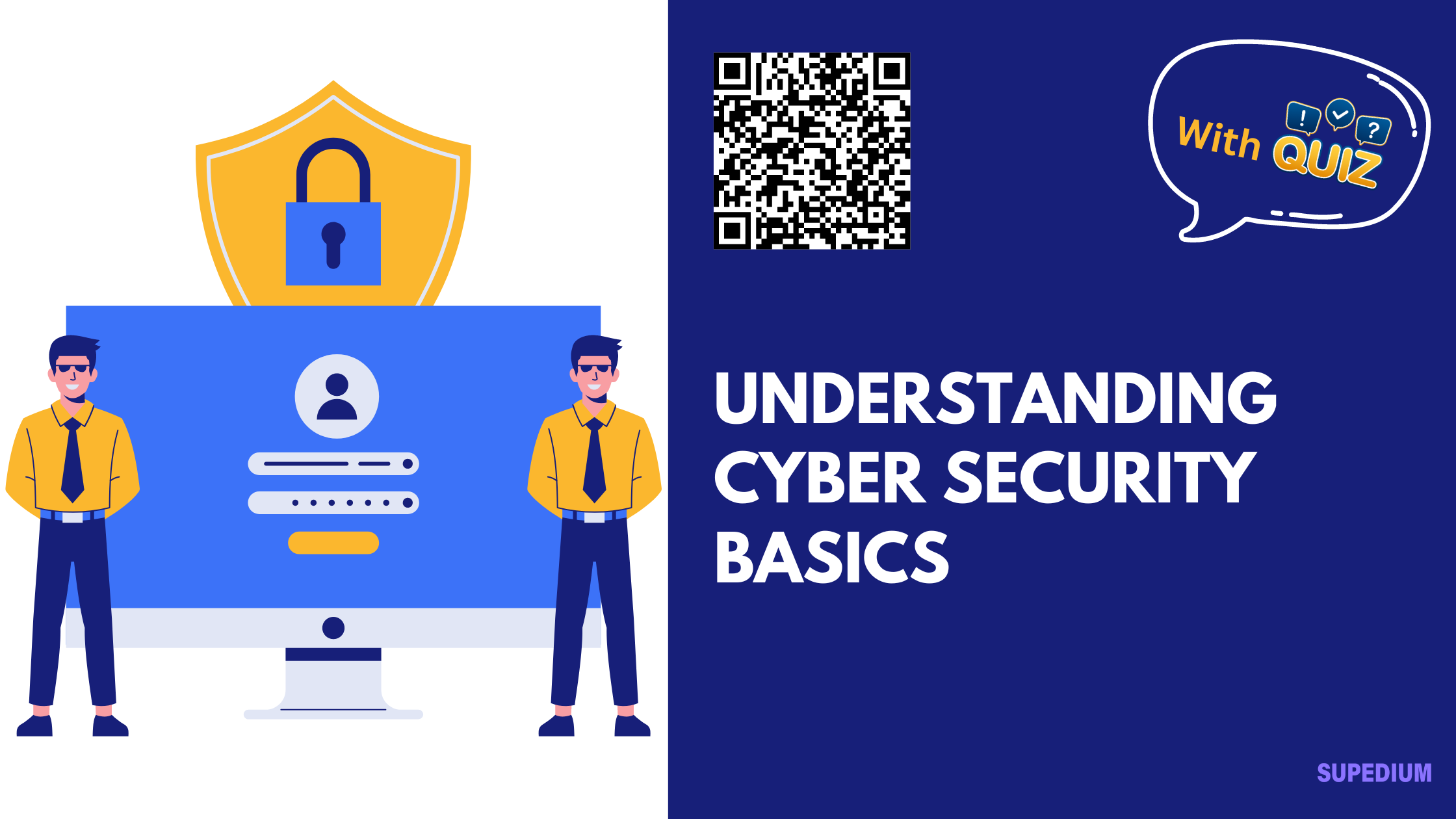Table of Contents
![]()
In an increasingly digital world, understanding cyber security is crucial for protecting sensitive information and maintaining the integrity of our online interactions. This article provides a comprehensive overview of cyber security basics, exploring key concepts, common threats, effective measures, and emerging trends.
I. Introduction
Definition of Cyber Security
Cyber security involves the protection of computer systems, networks, and data from unauthorized access, attacks, or damage. It encompasses various practices and technologies designed to safeguard information and maintain the confidentiality, integrity, and availability of data.
Importance of Cyber Security
As our reliance on digital platforms grows, so does the risk of cyber threats. Cyber security is vital for protecting personal, organizational, and national interests. Cyber attacks can lead to significant financial losses, data breaches, and damage to reputations. Effective cyber security measures help mitigate these risks and ensure a secure digital environment.
II. Key Concepts in Cyber Security
Confidentiality
Confidentiality ensures that sensitive information is only accessible to authorized individuals. Techniques to maintain confidentiality include:
- Encryption: Converts data into a secure format that can only be read by someone with the correct decryption key.
- Access Controls: Restricts access to information based on user credentials and permissions.
Integrity
Integrity involves protecting data from unauthorized alterations or corruption. Techniques to ensure data integrity include:
- Hashing: Generates a unique code (hash) for data, allowing detection of any changes or tampering.
- Data Validation: Ensures that data input meets predefined criteria and has not been altered during transmission.
Availability
Availability ensures that data and systems are accessible to authorized users when needed. Key techniques include:
- Redundancy: Involves using backup systems and duplicate data to ensure continued access during failures.
- Backup Systems: Regularly backing up data helps restore it in case of loss or corruption.
III. Common Cyber Threats
Malware
Malware is malicious software designed to harm or exploit systems. Types of malware include:
- Viruses: Attach themselves to legitimate files and spread to other systems.
- Worms: Self-replicate and spread across networks without user intervention.
- Ransomware: Encrypts data and demands a ransom for decryption.
- Spyware: Secretly collects information from users without their knowledge.
Phishing
Phishing involves deceptive attempts to obtain sensitive information by pretending to be a trustworthy entity. Common phishing tactics include:
- Email Scams: Fraudulent emails that mimic legitimate sources to trick users into revealing personal information.
- Phishing Links: Malicious links that lead to fake websites designed to capture login credentials.
Denial of Service (DoS) Attacks
DoS attacks overwhelm systems with excessive requests, causing them to become unavailable. Types of DoS attacks include:
- Flood Attacks: Overload a network with traffic.
- Application Layer Attacks: Target specific applications or services.
Insider Threats
Insider threats originate from individuals within an organization who misuse their access for malicious purposes. Prevention strategies include:
- Access Controls: Limit access to sensitive information based on job roles.
- Employee Training: Educate employees on security best practices and recognizing potential threats.
IV. Cyber Security Measures
Strong Passwords and Authentication
- Creating Strong Passwords: Use complex combinations of letters, numbers, and special characters.
- Multi-Factor Authentication (MFA): Adds an additional layer of security by requiring multiple forms of verification.
Network Security
- Firewalls: Monitor and control incoming and outgoing network traffic based on security rules.
- Intrusion Detection Systems (IDS): Identify and respond to potential security breaches.
- Virtual Private Networks (VPNs): Securely connect to a network over the internet by encrypting data.
Data Protection
- Data Encryption: Protects data by converting it into an unreadable format for unauthorized users.
- Secure Storage and Transmission: Use encrypted storage solutions and secure transmission protocols.
Regular Updates and Patch Management
- Software Updates: Ensure software is up-to-date to protect against known vulnerabilities.
- Patch Management: Regularly apply security patches to address software weaknesses.
V. Best Practices for Individuals
Safe Internet Habits
- Avoid Suspicious Links and Downloads: Be cautious when clicking on links or downloading files from unknown sources.
- Use Secure Websites: Look for HTTPS in the URL to ensure a secure connection.
Device Security
- Install and Update Antivirus Software: Use reputable antivirus programs and keep them updated.
- Enable Automatic Updates: Ensure operating systems and applications receive timely security updates.
Backup and Recovery
- Regular Data Backups: Schedule frequent backups to prevent data loss.
- Understand Recovery Procedures: Know how to restore data from backups in case of loss or corruption.
VI. Best Practices for Organizations
Security Policies and Training
- Develop Comprehensive Security Policies: Create clear guidelines for handling and protecting data.
- Conduct Regular Employee Training: Provide ongoing education on security practices and threat awareness.
Incident Response Planning
- Create an Incident Response Plan: Outline procedures for responding to security incidents.
- Conduct Practice Drills: Regularly test and refine response plans to ensure effectiveness.
Security Audits and Assessments
- Regular Security Assessments: Perform routine evaluations to identify and address vulnerabilities.
- Continuous Improvement: Adapt security measures based on audit findings and emerging threats.
VII. Emerging Trends in Cyber Security
Artificial Intelligence and Machine Learning
- Role in Threat Detection: AI and machine learning can analyze patterns and detect anomalies in real-time.
- Ethical Considerations: Address potential biases and ensure responsible use of AI technologies.
IoT (Internet of Things) Security
- Challenges with Connected Devices: IoT devices often lack robust security, making them vulnerable to attacks.
- Best Practices: Implement strong security measures for IoT devices, including regular updates and secure configurations.
Regulatory and Compliance Issues
- Overview of Relevant Regulations: Familiarize yourself with regulations such as GDPR (General Data Protection Regulation) and CCPA (California Consumer Privacy Act).
- Impact on Policies: Ensure organizational policies comply with legal requirements and best practices.
VIII. Conclusion
Recap of Key Points
Cyber security is essential for protecting digital information and maintaining system integrity. Key concepts include confidentiality, integrity, and availability, while common threats include malware, phishing, and DoS attacks. Implementing strong security measures and staying informed about emerging trends can help mitigate risks and enhance protection.






Be the first to comment